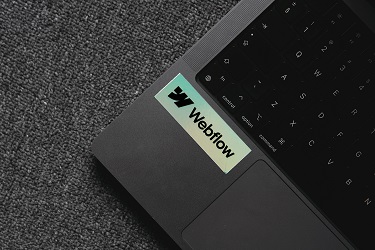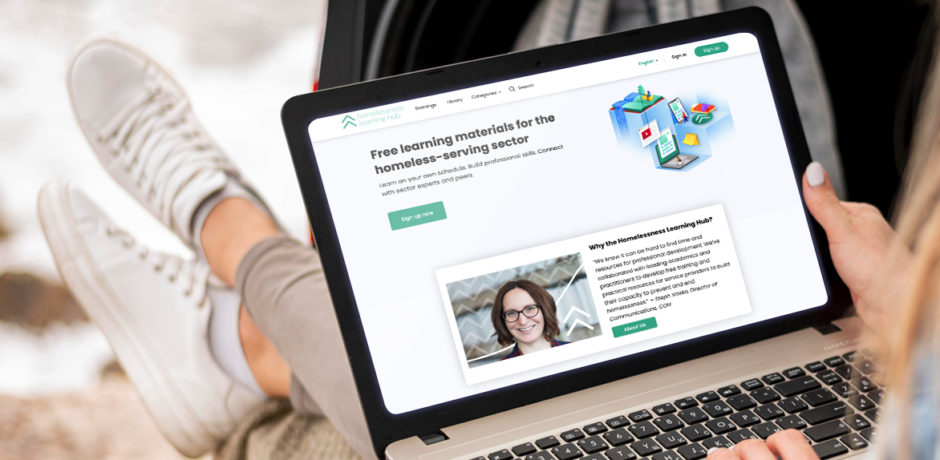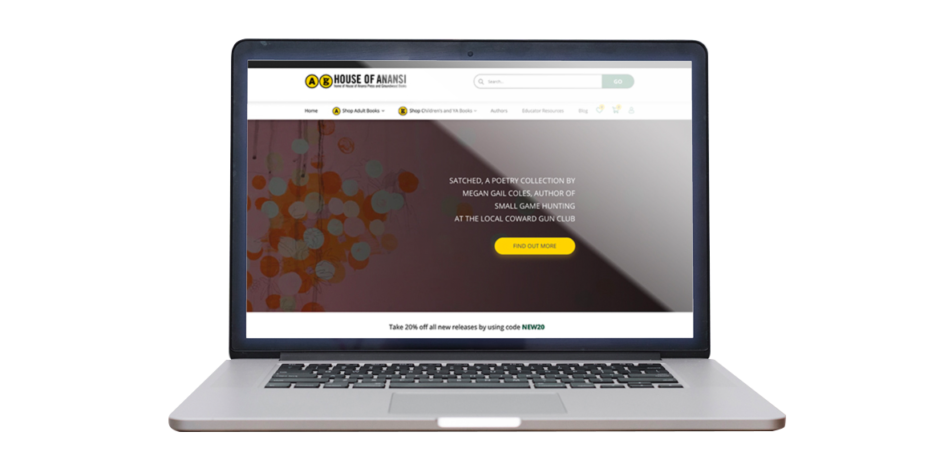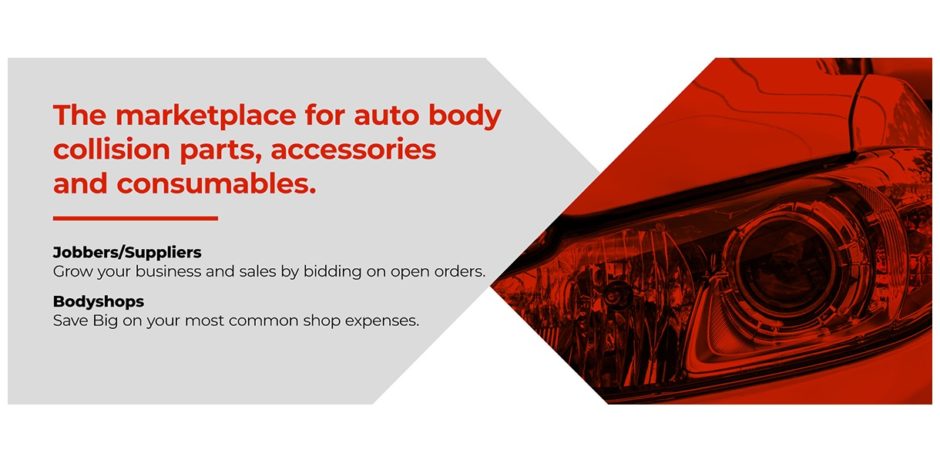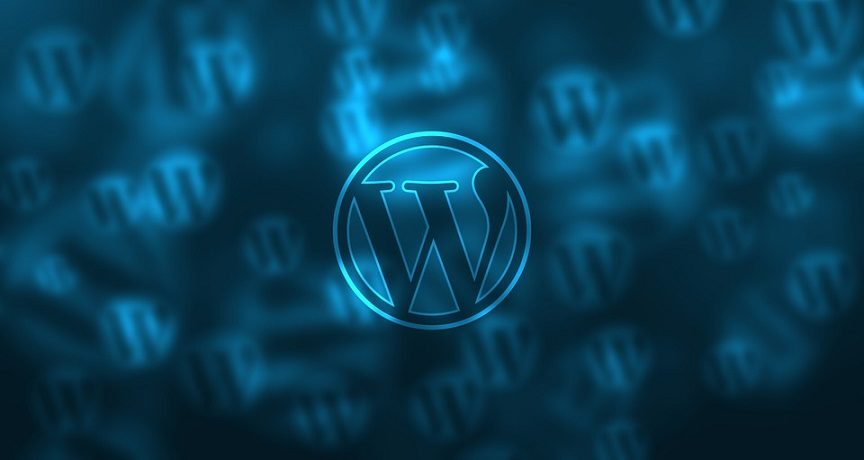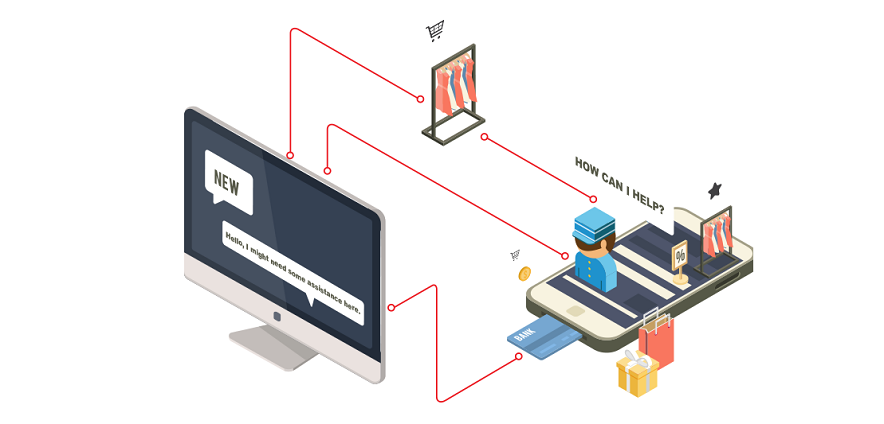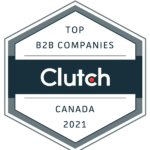Our Ideas | VerticalWave Web & Mobile Development
Why WordPress Is Still the Superior Choice over Webflow
Choosing the right platform for your website is more than a matter of preference; it’s a strategic decision that can significantly impact your online success and company brand. While Webflow has emerged in the last few years as a popular tool for its ease of use and visual design capabilities, WordPress continues to stand out as the preferred choice for businesses aiming for growth, flexibility, and a robust online presence. In this post, we delve into the WordPress vs Webflow matter and why WordPress triumphs, providing compelling reasons for selecting WordPress for their digital endeavors.
Customization and Flexibility
WordPress: A Universe of Possibilities
WordPress’s most significant advantage lies in its unparalleled customization and flexibility. Thanks to its open-source nature, the platform hosts an extensive ecosystem of plugins and themes, allowing users to tailor their sites to their exact needs. Whether you’re looking to enhance your SEO, boost your site’s speed, add an online store, or integrate with third-party services, there’s almost certainly a plugin for that. This extensibility makes WordPress ideal for businesses that anticipate scaling up or diversifying their online activities.
Webflow: Sleek, But Restricted
Webflow offers a more contained environment, which might appeal to users seeking simplicity. However, this simplicity comes at the cost of flexibility. While Webflow’s design-first approach is innovative, it inherently limits what you can achieve compared to WordPress. For businesses that require specialized functionalities or wish to extensively customize their site beyond visual design, Webflow’s restrictions become apparent.
SEO Capabilities
WordPress: Mastering Search Engine Visibility
With WordPress, optimizing your website for search engines is a breeze, thanks to advanced SEO plugins like Yoast SEO and All in One SEO. These tools guide you in optimizing content, improving readability, and ensuring your site meets the best SEO practices. The level of detail and control WordPress offers for SEO is unmatched, making it the go-to choice for businesses serious about high rankings in search results.
Webflow: Basic, But Limited
Webflow provides basic SEO tools that cover the essentials. However, it lacks the depth and breadth of WordPress’s SEO capabilities. For businesses looking to execute a sophisticated SEO strategy, WordPress’s comprehensive tools and plugins offer a more robust solution.
Cost-Effectiveness
WordPress: Open-Source and Economical
WordPress’s open-source nature means the software itself is free. Costs are primarily associated with web hosting, premium themes, or plugins, which are often one-time or annual fees. This model allows businesses to control their expenses, making WordPress a cost-effective solution over time.
Webflow: Subscription-Based Expenses
Webflow operates on a subscription model, which can seem affordable at first glance but may become more expensive as your needs grow. The cost of Webflow can quickly escalate, especially for larger sites or those requiring advanced features, making WordPress a more economically viable option in the long run.
E-commerce Solutions
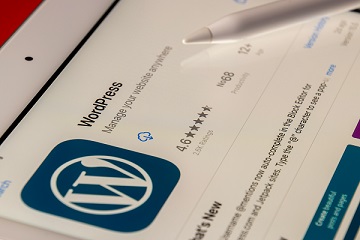
For e-commerce, WordPress offers WooCommerce, a powerful and customizable platform that integrates seamlessly with your site. WooCommerce supports an array of payment gateways, shipping options, multiple currencies and currencies converters and virtually unlimited product variations, making it suited for businesses of all sizes.
Webflow: Simplicity over Flexibility
Webflow’s e-commerce capabilities are designed for simplicity, which might suffice for smaller online stores. However, businesses that need more control over their e-commerce experience will find WooCommerce’s flexibility and scalability more accommodating.
Community Support and Resources
WordPress: A Global Community
WordPress boasts a massive, global community of developers, designers, and users. This vibrant community offers an abundance of tutorials, forums, and resources, ensuring help is always available. Whether you’re a beginner or an advanced user, the WordPress community is an invaluable asset.
Webflow: Growing, But Limited
While Webflow has a supportive community, it’s significantly smaller and less established than WordPress’s. This means fewer resources, tutorials, and third-party services, which can be a drawback for businesses requiring extensive support and development.
Conclusion
WordPress’s superior customization, flexibility, SEO capabilities, cost-effectiveness, and community support make it the preferred choice for businesses looking to establish or grow their online presence. While Webflow offers a streamlined, design-centric approach, it falls short in providing the scalability, control, and extensive ecosystem that WordPress offers.
If you’re looking to build a website that can grow with your business, adapt to your changing needs, and rank well on search engines, in the WordPress vs Webflow confrontation, WP is clearly the winner. Contact our WordPress digital agency today to discover how we can help bring your business’s online vision to life, or to learn more about transitioning from Webflow to WordPress.
Homelessness Learning Hub Powered by LearnDash LMS and WordPress
Introduction
The Homelessness Learning Hub (HLH) is a project started by the Canadian Observatory on Homelessness and is funded by the Government of Canada. It serves as an important resource for professional growth and strengthening community efforts in Canada’s sector that helps the homeless. The HLH provides training and materials that are based on the best methods and research with solid evidence. To improve its online learning, the HLH needed significant changes and were looking for a solid LMS system to meet their needs. Working with VerticalWave Solutions, we have been partners for many years and on many projects. Our goal was to create an engaging online platform that follows the newest standards in UI/UX design.
Challenge
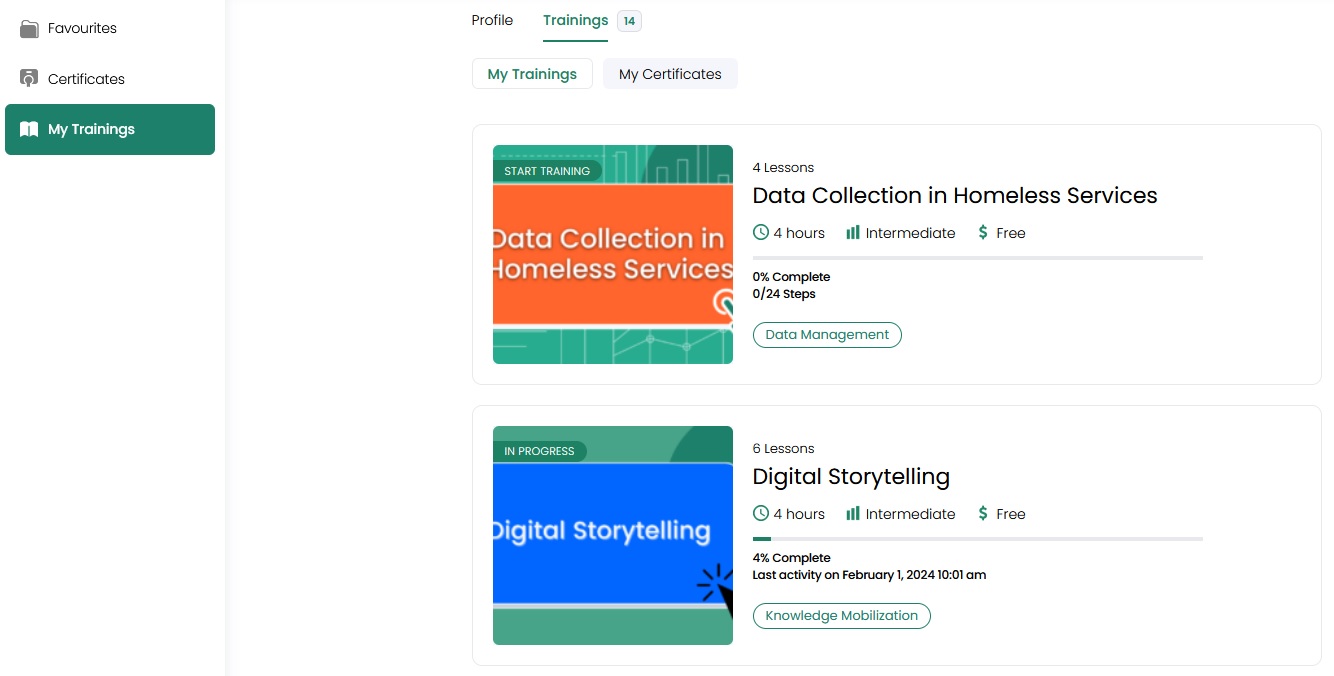
Analysis
Our collaborative analysis with HLH identified the essential attributes for a state-of-the-art Learning Management 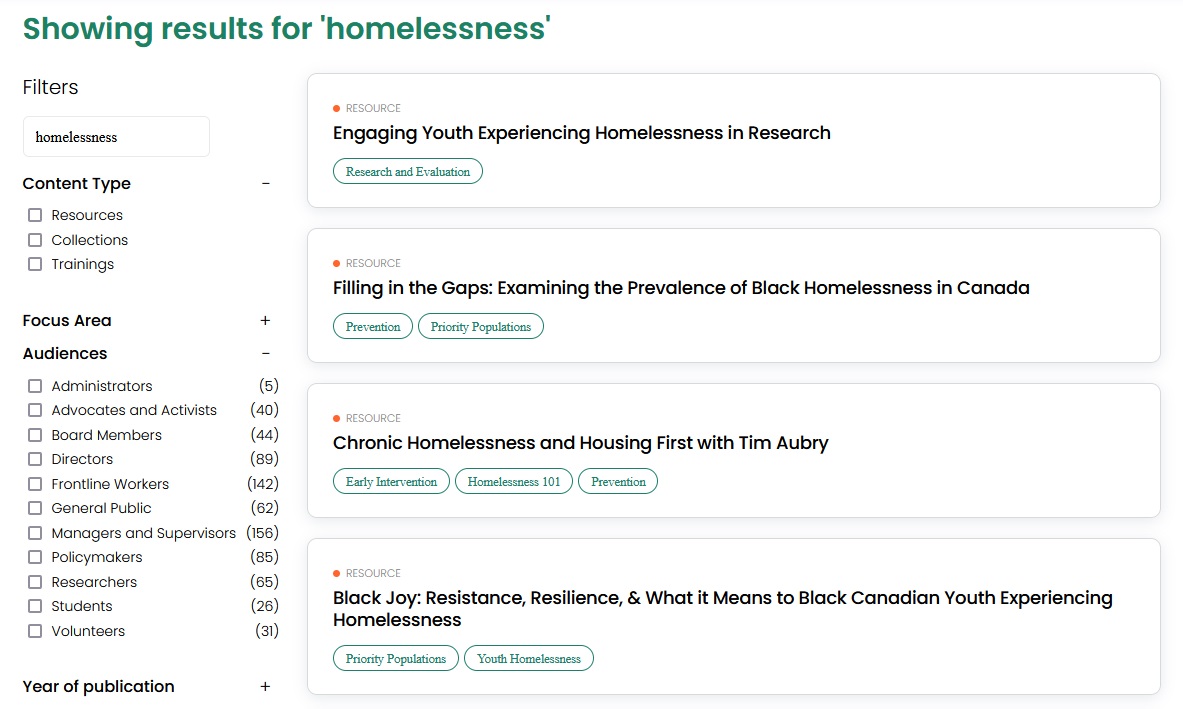
- A lightweight infrastructure capable of supporting a vast user base without compromising performance.
- An intuitive LMS that facilitates easy access to content and tools, ensuring a logical progression through training materials.
- Effective content and user management capabilities.
- The flexibility to incorporate future enhancements without the need for extensive coding.
- Bilingual support, alongside custom content types, taxonomies, and functionalities.
- Advanced search and filtering options.
- Economically viable development and maintenance costs.
Solution
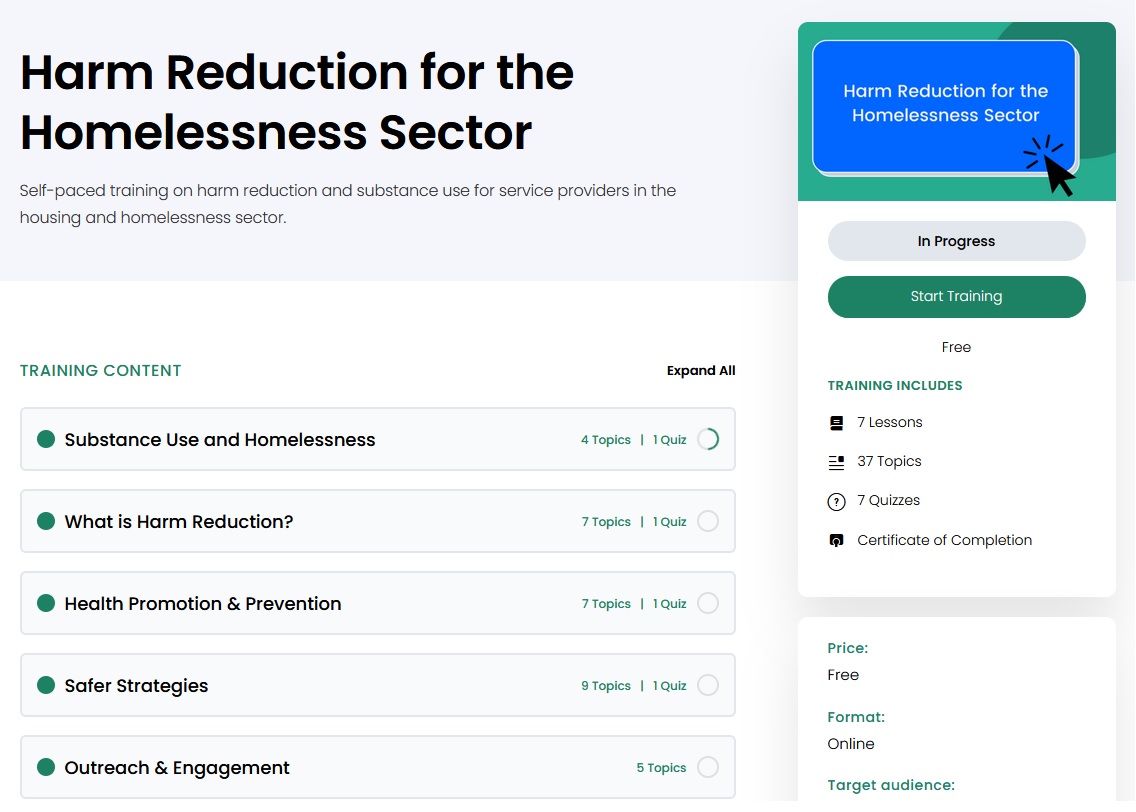
Our team carefully set up the WordPress system, BuddyBoss theme, and LearnDash LMS, adding special content types like collections, courses, and resources. We moved all the data from Drupal to the new WordPress LMS. This included courses, lessons, resources, collections, over 1500 users, and related media. After moving the data, we added custom UX/UI improvements and other specific features the client wanted.
Results
Launched in 2021, the Homelessness Learning Hub, powered by WordPress and enhanced with the BuddyBoss Pro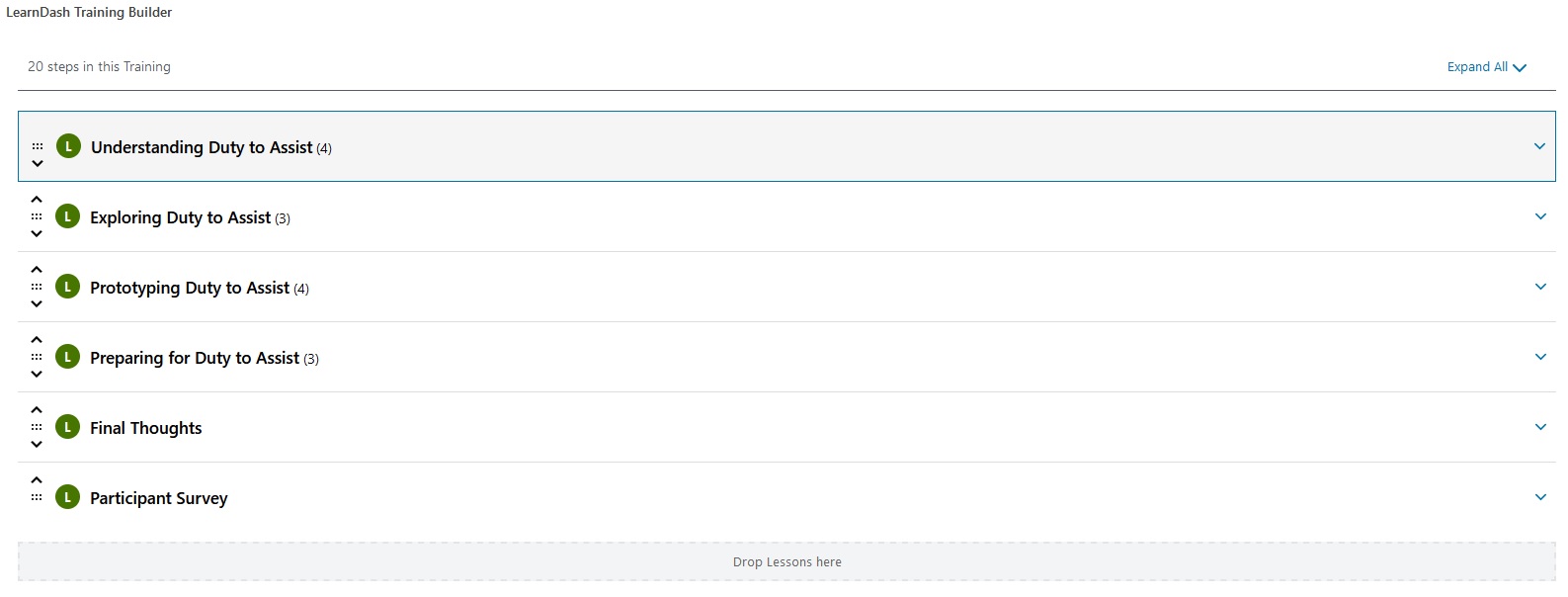
VerticalWave Solutions remains committed to providing continuous support and updates, ensuring the HLH LMS remains at the forefront of online education in the homeless-serving sector.This case study exemplifies the transformative power of WordPress and LearnDash in creating an engaging, efficient, and accessible online learning environment.
Fast TV Channels Website Series Launched
We’re proud to present our latest project, the interactive Fast TV Channels Website Series for Blue Ant Media. Headquartered in Toronto, Blue Ant Media is a privately held global media company, with offices in five other countries besides Canada.
The Blue Ant team needed a platform to promote some of the newest shows streaming on popular platforms like Roku, LG Channels, Xumo, Vizio, Samsung TV Plus and others, while targeting content for specific countries worldwide and turned to Vertical team for design and development. The Blue Ant and Vertical teams have an outstanding relationship, as we’re providing ongoing maintenance and support for their other projects, like CottageLife, MobileSyrup, BeMakeful, TheBabyShows and other successful websites over the past year.
The challenge was to create a platform that delivers a similar design template across all websites, but promotes specific content for each individual site at the same time. The platform is engineered using our in-house design and a backend structure based on WordPress and Divi, plus additional custom built plugins. At the same time, each website displays country specific shows and streaming channels using a geolocation functionality identifying visitor IP. A default page is displayed if no shows are available in a particular country; otherwise the users are redirected towards Canada, US or Europe specific pages depending on their location.
Another advanced functionality allows administrators make bulk plugin and core updates and content edits across all websites using a single master admin system. The master-slave backend system is designed to reduce operation times and simplify maintenance. At the same time, each website can be updated individually as needed and can act as an independent app.
Here’s a quick overview of the of the Fast TV Channels top features:
- Unified layout design
- Simplified administration interface using both frontend and backend access
- One site controls all
- Geolocated content display based on user IP
- Custom 3D shows carousel
- Fully responsive
The Fast TV Channels include HauntTV, CrimetimeTV, LovePetsTV, HomefulTV, DragRaceUniverseTV, TotalCrimeTV and HistoryTimeTV. The series of channels does not stop here. Several new channels will be added in the near future to complete the list, offering info on the newest and most exciting shows available on popular streaming platforms worldwide.
Anansi + Groundwood E-commerce Platform Launched
House of Anansi Press is Canada’s leading independent publisher, bringing readers award-winning and bestselling books from the realms of poetry, as well as fiction, nonfiction, drama, French-Canadian writers in translation, lifestyle, and authors from around the world.Founded back in 1978, Groundwood Books is one of the top children’s books publishers, with collections acclaimed for being ahead of the curve, justice oriented, and unafraid of touching stories that may be considered difficult or controversial.
VerticalWave Solutions brought the two major Canadian publishers together on a new, integrated e-commerce platform, migrating all of the content from the old sites. The new, modern Anansi+Groundwood website is developed on Shopify and integrates a series of custom features intended to vastly improve front-end user experience as well as the back-end management for system admins.
Together with the client, our team chose a modern theme and then customized it with a wide range of features and options. The theme was modded and customized to deliver enhanced UI and UX across all devices and screen resolutions. An intuitive product browsing system, based on catalogs, collections, genres and more, complemented by a quick preview and simple and efficient shopping cart provides users with an enriched shopping experience.
One of the challenges of the project was to migrate the entire content from the old sites to the new Shopify store. Using a series of scripts, ingestion apps and checkup procedures, our team managed to successfully transfer all of the orders, customers, blogs and products to the new platform and update them with the new tags, while also integrating them into the required collections and categories.
To make sure the site maintenance and product updates are quick and easy to perform, we configured the Shopify backend with an intuitive and easy administration interface in mind, keeping things accessible even for non tech savvy admins. From orders and payment processing to products sorting and configuration, everything is tight and easy to use.
The new Shopify Anansi + Groundwood platform is also designed and developed in compliance with WCAG – Web Content Accessibility Guidelines and the AODA – Accessibility for Ontarians with Disabilities Act rules. The site is accessible, sporting an optimal contrast, font sizes, image captions, tags and more and is compatible with most screen readers available today.
We’re proud to say the Anansi and Groundwood teams are extremely happy with our work. VerticalWave will continue to provide support s well as security and feature updates throughout the new site’s lifespan.
Vinostics auto collision repair marketplace launched!
Vinostics is our latest project and we’re proud to say it is one of a kind. As a matter of fact, it is the first marketplace dedicated exclusively to the US and Canada collision repair sector. Vinostics has two major components, one dedicated to body shops, which can open bids on the products they need and one dedicated to suppliers which can fulfill the open bids. Body shops can select the most competitive offers based on prices and product selection, saving big on their expenses.
Moreover, the marketplace offers a wide array of products from which body shops can choose and also allows manufacturers and distributors suggest alternative products if needed. Communication between body shops and suppliers/jobbers is ensured via web, text messages and email. We can say it’s more of a community than a classic marketplace. The database is huge, containing more than 15k products from the most prestigious brands, like 3M, Norton, Tork, Devilbiss, Carworks, Anest Iwata, Gerson, Fusor and more. From shop supplies and tools, like wipers, cans and racks, spray guns and sanders to consumables like abrasives, fillers, filters, compounds and safety items, Vinostics covers it all.
The marketplace is built using cutting edge tech, ensuring total security and a modern, attractive and intuitive UX. Shopify is used at the core, as it is perhaps the most reliable ecommerce platform, offering multiple options to sellers and buyers. The back-end uses Node.js, due to its cross-platform capabilities. The front-end is based on the Angular framework to deliver enhanced user experience. For the database we used Firestore, thanks to its scalable and flexible features. We added Prismic as CMS, allowing administrators update the platform quickly and easyily. The marketplace also uses a custom Algolia search engine, which provides accurate results on any query.
The Vinostics marketplace grows each day. Dozens of body shops and jobbers are using the platform as we speak placing orders and bids, getting in touch and getting jobs done. The Vinostics team is also proud of their platform and the job VerticalWave has done. They are second and third generation automotive craftsmen and merchants, with extensive know-how in the industry and the marketplace app is perfectly tailored to their needs.
VerticalWave leading e-commerce provider in Canada according to Clutch
In our line of work, we’re always using the most innovative e-commerce technologies and methodologies and we’re always up to date with the industry trends. That’s because we place a lot of importance around ensuring that our clients are always happy with our work.
We’re always focused on finishing projects on time and within budget, while also making sure the end products we deliver to our clients are fresh, exciting and impressive and meet only top quality standards.
And that is why Clutch views us as one of the leading e-commerce developers in Canada.
Based in Washington D.C. Clutch is a leading B2B ratings and reviews website which aims to put clients in touch with service providers who will be the ideal fit for their project needs and requirements. Clutch analysts segment the vendors listed on their site according to location and industry and then rank them based on their focus and ability to deliver in order to help clients make a competitive decision.
What makes Clutch an objective platform is that their focus score reflects the services that each provider offers, but at the same time the score for ability to deliver is dependent on their client reviews, market presence, and awards.
Clutch analysts also verify each review by interviewing past clients about previous projects. The analysis helps them capture the full scope of each project and the extent of the client’s relationship with the provider.
Based on these criteria, Clutch analysts have rated us with a perfect 5 out of 5 star rating.
Here are just a few testimonials from our clients:
“The IGH Hub was successfully launched with all the features we requested…They were willing to work with us to find solutions for complicated features or issues.” – Project Manager, Social Work Organization
“Vertical Wave was on time, on budget, and very responsive.” – Business Development Manager, Publishing Company
“VerticalWave Solutions has always given us what we were looking for.” – Communications Officer, Research Organization
Apart from its flagship platform, Clutch also runs two other websites, The Manifest – an online publication that posts business news and insights and Visual Objects – a recently launched website which where mobile app development companies and other creatives can showcase their best work.
We’re proud to say that VerticalWave Solutions is included on their page of the top <Drupal developers in Canada on The Manifest website.
Going forward, we’re excited to meet new clients and get them to reach their goals with Clutch’s help.
If you’d like to see what we can do for your business, contact us today!
CMS Wars – WordPress vs Drupal – 2019
WordPress has come a long way since it was launched back in 2003.
From a simple blogging platform it has evolved into a powerful and highly customizable CMS, a fully fledged complex website solution. Moreover, over the past five years it has gained a significant share of the CMS market, with about 60% of all websites running it as their CMS.
While competing CMS solutions, like Drupal and Joomla have continued to trend downwards, WordPress has been gaining worldwide appreciation from both, end users and developers thanks to a continuous process of innovation.
Let’s take a closer look at the plain facts, to understand the CMS market evolution up to 2019, according to statistics:
- MS Market share: 60.2% WP, 6.3% Joomla and 4.4% Drupal.
- Number of live sites (estimated): 75.000.000 WP, 2.000.000 Joomla, 1.000.000 Drupal
- All web: 34% WP, 4% Joomla, 2% Drupal
As you can see above, the numbers are pretty astonishing.
As active participants in the design and development space for more than 10 years, we’ve been working with, customizing and implementing all of the above systems into client projects.
Each of them has their own strengths and weaknesses depending on project, however, as it stands today, WordPress is by far the most intuitive, versatile and cost effective CMS out of the box.
From our experience, in the last few years, a lot of Drupal CMS projects have been replaced by WordPress. We do migrations from Drupal to WordPress regularly now, a major change from a few years ago, when the opposite was a lot more common.
Businesses and developers slowly moved away from Drupal and focused on WordPress, due to its increased ease of use, modularity and highly efficient plug and play plugins, intuitive publishing system and content administration.
While each new version of WordPress focuses on enhancing performance, flexibility and usability, bringing new features and simplifying administration and development, the latest version of Drupal, Drupal 8, really managed to mess things up.
Drupal not only changed the whole implementation model for developers, but became more difficult to work with overall, buggy and with a lack of basic core functionalities. One example is the need to write custom code or install third party modules, just to open a link in a new browser tab.
In a stark direct contracts to Drupal, WordPress offers extensive flexibility and versatility and comes with ton of features out of the box, that cover almost any functionality a website might need.
It’s pretty easy and straight forward to work with from an end-user perspective: if you need an online store, you just install and configure WooCommerce; you need a forum or community, just add BBpress or BuddyPress to the mix. Easy, reliable, clean development, intuitive administration system, reliable support.
Moreover, as said before, using WordPress to power a website is much more cost effective than using pretty much any other CMS currently available. The development cycle is not that time consuming, testing is cleaner and easier, updates and upgrades can be done on the fly and without extensive maintenance and downtime.
Also, the overall back-end administration system is more user friendly and most features are focused on usability.
In summary, the advantages of using WordPress are many, from lower development costs, an easy management and publishing system to multiple functionalities. WP can be used for basic presentation sites, as well as advanced custom and complex web applications, forums, data collection platforms, e-commerce stores and more.
We highly recommend it here at VerticalWave and if you happen to need some help with a new or existing website project, don’t be shy and give us a shout.
Cheers.
IGHhub Platform Launched
We’re proud to announce the launch of our latest project, The Institute of Global Homeless Hub (IGHhub) website. Backed by The Institute of Global Homeless, the Hub is designed as a multi-purpose platform to serve researchers, practitioners, and policymakers across the globe and it addresses world-wide audience. It helps connect ideas, effective practice, policies, data and more in an admirable effort to eradicate street homelessness at a global level.
The platform is powered by the powerful Drupal content management system, it incorporates the latest tech features for advanced flexibility and usability and uses a custom, responsive design which renders perfectly on laptops, desktops and mobile devices, on virtually any screen size and resolution.
The IGHHub features a friendly back-end user interface, which allows administrators and editors add tons of content, media items, files and more with a few clicks. The large database is easy to manage and a custom search engine, based on Solr, grants quick access to any piece of content.
Moreover, the content adding, editing and deletion system is optimized for fast publication and updating. The entire content and user database is highly protected and backed up regularly to prevent data alteration of any kind. VerticalWave Solutions also provides ongoing maintenance and support for the entire project.
We’re sure that with a powerful tool like the Hub platform to serve their needs, the guys at The Institute of Global Homeless will be able to fight homelessness in a much more efficient and productive way.
Benefits and Challenges of Working With Remote Developers
So, you have a big project on your hands and don’t have the man power to get it done, but your company is not yet ready to hire in-house developers? Or maybe you need to complete an in-house web or mobile project but lack the technical expertise of a dedicated software development team?
The solution is simple, get in touch with a reliable remote developers team and outsource the work. There’s also the option of hiring freelancers, but you need to be careful here, as things can go wrong fast, if you’ve never done this before.
There are some good freelancers out there without doubt, but you can’t always rely on the freelance job sites reviews to pick the best of them. Making the wrong choice could bring a world of pain including project going over budget, timeline delays, poor execution, lack of quality control and the list goes on.
How can a remote developer team bring value added to your project and company? The answer is simple, but only if you choose the right developers for the job: it can help you reduce costs, can stick to a predefined timeframe and budget, can deliver projects at high standards and offer ongoing support.
Moreover, good developers don’t just execute tasks, but offer insights, suggestions on how to make improvements and optimize the project to achieve the end goals and scope.
However, besides proven experience, accurate communication and constant feedback are the keys when working with remote developer teams. Language barriers, misunderstood requirements, poor management, time zone limitations can all become impediments for both parties.
That’s why you need to make sure that the entire collaboration is thoroughly supervised and managed. Of course you need skilled people on your side too, but an experienced task and project manager on the remote team side makes a real difference. This role can successfully mitigate all risks that can arise during the project.
Although, understandably some companies are reluctant to engage remote developers teams, because of the downsides mentioned earlier, the benefits far outweigh the potential risks. Hiring remote developers on demand is a viable solution for the fast-evolving and interactive digital world today. Flexibility is no longer a downside, but an asset, especially when it is professionally managed.
Still don’t really know how to approach the remote development team solution? Here are a few aspects to keep in mind if you consider hiring developers on-demand and want to make sure the collaboration is resourceful and successful:
- Make sure you hire the right team (check their experience, talk to previous clients, verify coding expertise to match your needs and do not rely on web reviews only).
- Have a well put together set of requirements, specifying clear details.
- Set clear project milestones.
- Make sure the team is well managed by an experienced project manager on both sides.
- Make sure that proper communication and feedback is established, using the right tools and processes.
- Set a clear budget and timeline for the project.
- Keep the remote team engaged and in the loop.
- Seek teams that offer ongoing support and can bring value added to the project through their experience.
Chatbot Factory Launched
We’re proud to announce the launch of our latest service, Chatbot Factory, aimed to deliver out-of the box, cost-effective and automated Facebook solutions to simplify the interaction between users and companies or organizations. The VerticalWave Solutions department behind Chatbot Factory gathers a team of enthusiastic coders and designers, skilled in artificial intelligence and non-artificial intelligence Facebook chatbots programming.
Facebook Chatbots can prove really useful and help your customer support and sales team in a constructive way, easing their work. We’re experts in programming them to assist your company with user and client engagement through your Facebook page, by turning it into an engaging and interactive gateway.
Our chatbots integrate with the Facebook messenger and are able to respond accurately and in real time to user inquiries. They can provide basic info regarding products and services, but also perform complex tasks like manage sales and shipping services. They are easy to deploy and do not require programming skills to be configured and managed. Moreover, they can be adapted to virtually any industry sector.
Chatbot Factory chatbots come in two ‘flavors’ to bridge the machine-human interaction gap and serve your company’s needs:
- AI programmed: they learn patters based on user interaction and are able to develop a human-like behavior to drive and automate conversation and services
- Non-AI programmed: they interact with users based on specialized preset rules and options set on your side to deliver specific responses
Both Facebook chatbot versions are designed to mimic human behavior and engage your users, customers and potential customers in an intuitive way, automating and even improving customer support, sales, analytics and an entire set of other useful services to boost your company’s ROI.





